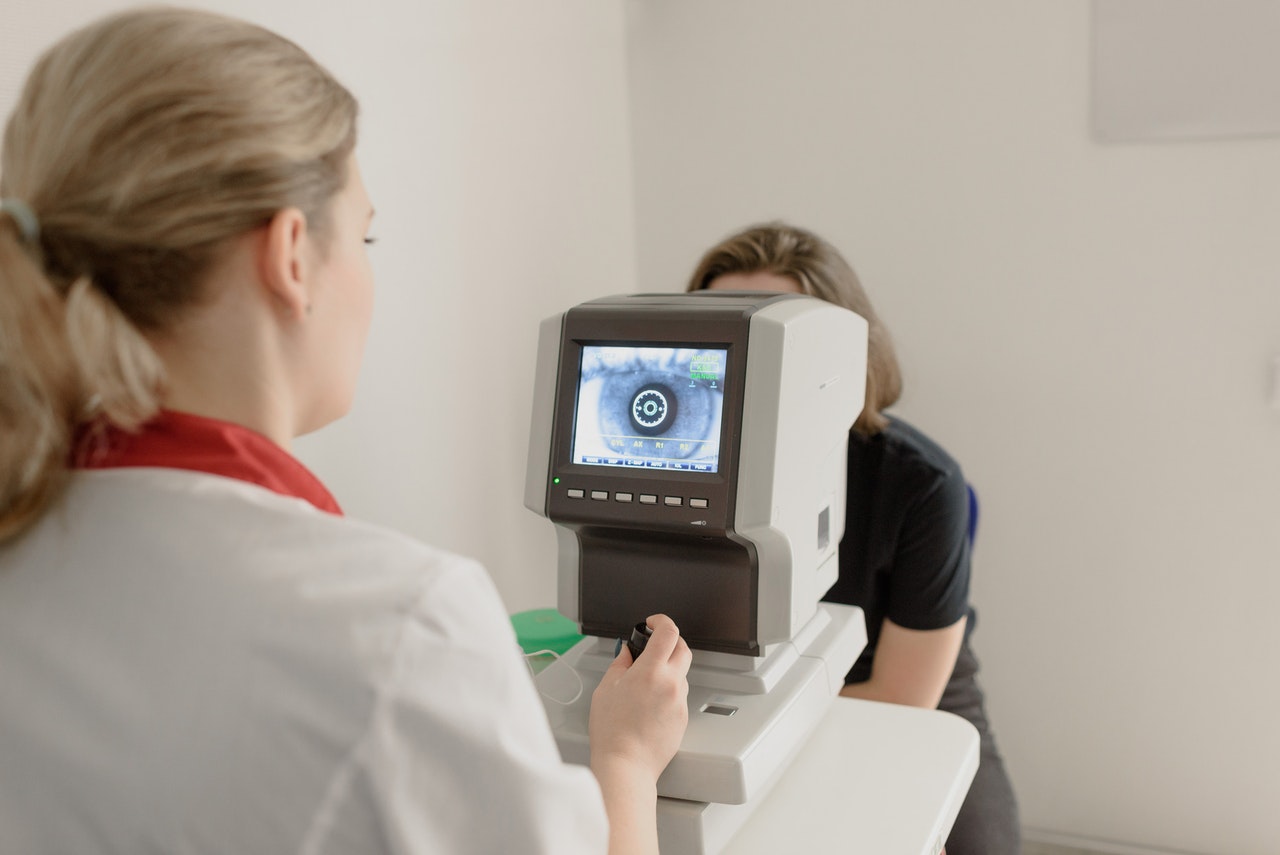Overview
Vision is the most important aspect that you require to drive a car safely. Without vision or if your vision on the road is interupted just briefly can result in a major accident. You get 90% of all traffic information through your eyes. To be able to obtain a category B licence you require a visual aquity of 0.5. Visual acuity (VA) is a term used to describe how well someone can see, although it really measures how accurately they can distinguish between small details. Visual acuity focuses on the optical part of the eye and how well the brain interprets that information.
- The sharpness of the retinal image within the eye
- The health and functioning of the retina
- The sensitivity of neurons in the brain to interpret an image
If you have impaired vision, your driving license may be given with the condition that you wear spectacles while driving

Field of Vision
The region we perceive is referred to as the visual field. The visual field is shaped like a semicircle (180 degrees +/- 5 deg). (A) is the central vision where we can focus on objects and read information. (B) is the peripheral vision where we observe objects moving but dont nessesarily the detail of the object. We will typically move our head to focus on the object

- A: Central vision (1-2)%
- B: Peripheral vision (98-99%)
- C: Far peripheral
Where does experienced and inexperienced drivers focus
| Experienced drivers | Inexperience drivers |
|---|---|
| Flexible gaze over the field of vision | Fix their gaze on objects |
| Smooth transitions between central and peripheral vision | Tend to look to long at a specific object rather then scan the field of vision |
| Focus on moving objects rather then fixed objects or lamp posts | Focus on fixed objects. |
| Wider and longer field of observation. | Narrower and shorter field of observation. |
Facts about vision
- Peripheral vision: Reduced with alcohol, tiredness and stress
- Short sightedness in the darkness: Some people are effected by darkness and the distance they can see
- Night blindness: Night blindness (nyctalopia) is the difficulty to see clearly at night or in low light conditions.
- Defective vision :This becomes worse over time and age, Always have your eyes checked out.

Tunnel vision
Tunnel vision occurs when this peripheral vision is lost. When this happens, you only see something if you're directly looking at it. Alcohol, tiredness and stress can enhance this vision
Optical illusions
An optical illution is something that looks or appear to be something but turns out its not
Examples:
- You want to overtake a car and see an oncomming slow moped. Turns out its not a moped but a motorcycle that can drive much faster.
- Car mirror can make things look bigger or closer then they really are
- Snow smoke.
Your other senses is also used
- Hearing and Touch:When you need to change a gear you use hearing and touch. You also listen to how water or slush is spraying up against your car. If the slush stops spraying then you could be driving on ice.
- Smell: Smell is used when you sense something burning like brake fluid that leaked out.
- Balance: You can feel the car sliding over icy or wobbeling over the road if you drive too fast. Your balance is responsible for alerting you when this happens
